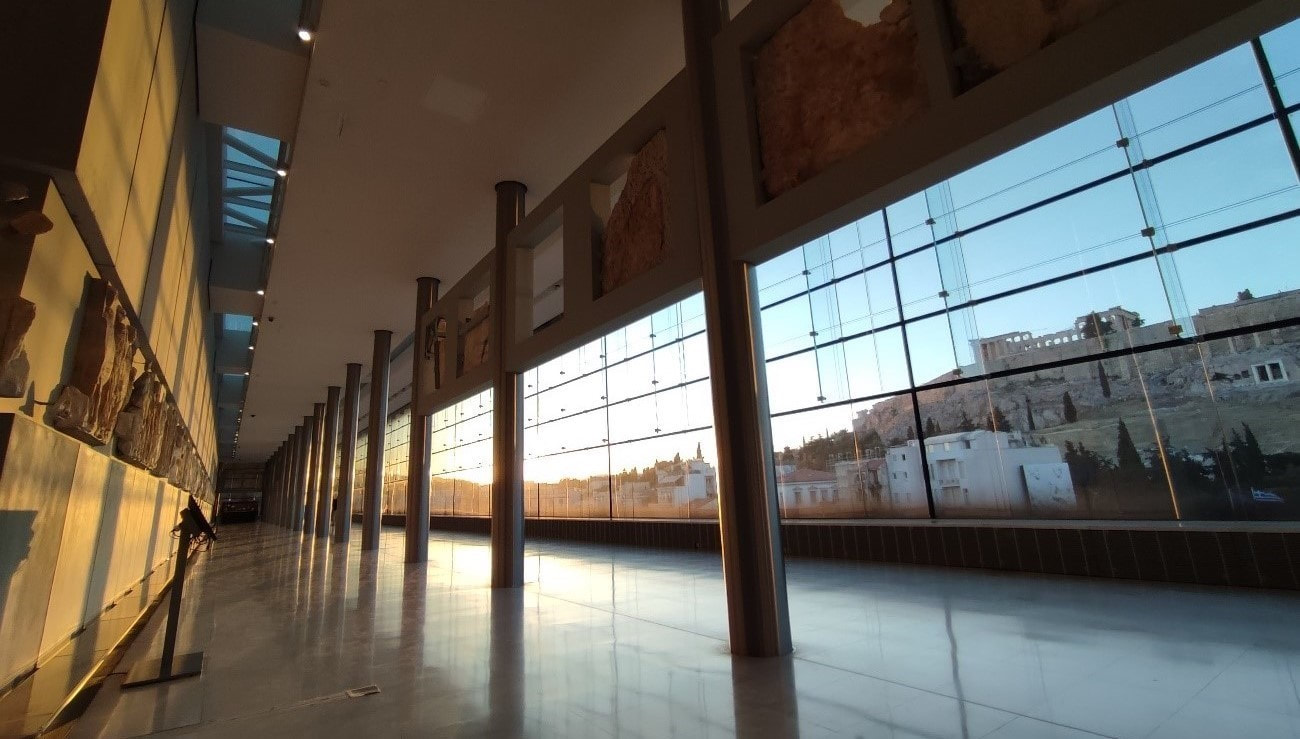|
We recently had a meeting for our Erasmus+ Sustainability, Heritage, and Health project in Athens. Looking out at the Parthenon and thinking about the ecological emergency, Euri had some thoughts:
The Parthenon is Greece’s most iconic building, and it is also a symbol of Antiquity and democracy in the world. The building was finished in 438 BC, and it is dedicated to the goddess Athena, after which the ancient city is named. For almost thirteen centuries, the Parthenon overlooked the Athenian city almost untouched. In the final decade of the 6th century AD, the Parthenon was converted into a Christian church dedicated to the Virgin Mary. After the Ottoman conquest, the Parthenon was turned into a mosque in the early 1460s. It was only in 1687 when general Francesco Morosini of the then Republic of Venice invaded the Ottoman-controlled city and bombed the building, where the sitting army had stored gunpowder. One of the architectural marbles of history collapsed in a single event, and with it, a gem of human History. From 1801 to 1803, Earl of Elgin removed some of the surviving sculptures which are now in the British Museum. For most of its history, it was desecrated, forgotten, and ultimately destroyed. It only became celebrated quite recently. The Parthenon is now a symbol of democracy and Western civilisation, celebrated as one of the most important buildings in the world, with millions of tourists visiting every year. Celebrated when it is too late. Does nature have the same fate of the Parthenon? The WWF states that between 1970 and 2016, wildlife populations have declined, on average, by 68%. Terrestrial populations have declined 38%, while freshwater populations have declined by 81%. The rapid loss of species we are seeing today is estimated by experts to be between 1,000 and 10,000 times higher than the natural extinction rate. These experts calculate that between 0.01 and 0.1% of all species will become extinct each year. Will people look back in several hundreds of years and ponder over how could anyone be so reckless and careless as to fail to protect the wealth of the nature world, a symbol of life, unique in the universe? Will people dig up the remains of the natural world like we dig for dinosaur bones today and take them to museums, the only places where people will learn about the massive biodiversity that once thrived on the planet until the 21st Century? Through deforestation, the burning of fossil fuels, land and ocean pollution, mindless consumerism, humanity is stacking up its own gunpowder inside the ancient marvel that is nature and that took billions of years to be what it is today. As we can attest from the history of the Parthenon, it does not take very much for all of it to go away. Will nature be celebrated only when it is gone?
0 Comments
Leave a Reply. |
�
AboutHere’s a collection of some of our articles which have been in our newsletters or published elsewhere.
Archives
May 2024
|
Sign up TO SUREFOOT NEWS >>The Surefoot Effect equips people, communities and organisations with skills for sustainability and resilience.
|

 RSS Feed
RSS Feed




